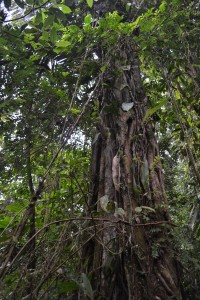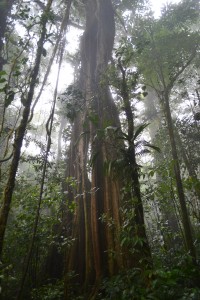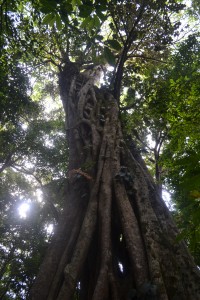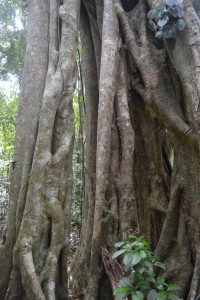While on our trip, we encountered several interesting-looking vines that appeared to be epiphytes. These vines, which we found at various locations, are actually strangler figs.

Strangler Figs, a Ficus plant, begin their lives as epiphytes on trees. Their seeds are dispersed and then germinate on the host. From there, their roots grow down, growing in diameter, until they take root in the ground. This is when they stop the epiphytic phase of their lives.

After they take root, the strangler figs begin to expand their vines until they surround the host tree completely. They “strangle” the host tree until all that is left is the fig, which has the appearance of a skeleton of a tree. In this way, the symbiotic epiphyte that the fig started as is now a parasitic organism that has taken the place of it’s host.


References:
http://peculiar-plants.wikifoundry.com/page/Strangler+Fig+Trees+(Epiphytes)
http://www.decah.com/pdfs/costa_rica_plants.pdf
http://watchingtheworldwakeup.blogspot.com/2009/03/costa-rica-part-3-palms-epiphytes-figs.html
